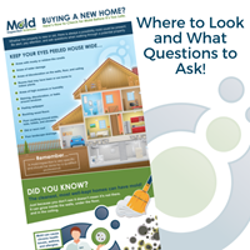Don’t Use the Same Company for Both Mold Inspection & Mold Remediation
Here’s Why…

Specialized and Unique Skills and Training
Mold is an important yet destructive part of our ecosystem. It has an industry dedicated to hunting it and removing it from living and working spaces and yet there are many misconceptions surrounding mold assessment, mold remediation, and why each job needs to be done by a separate, and uniquely qualified, company. Did you know that any trustworthy remediation company won’t and shouldn’t start a project without a protocol, developed by an independent third-party mold assessor, in hand? Here are a few reasons why:
The Importance of a Mold Inspection Before Remediation
The big picture is that a mold assessment involves detailed inspection and sampling of indoor air and/or surfaces to help determine if remediation is necessary. Even if there is visible mold it is important to establish the extent of required remediation by testing samples. Here are fours things to consider:
1. Conflict of Interest – Mold remediation is a specialized process that includes the containment, removal, and cleaning of mold or mold-contaminated materials. Mold remediation teams undergo specialized training, just as inspection and assessment teams do. Even though each process deals with mold, performing both services on the same job creates a conflict of interest. Any reputable mold remediation company will insist on receiving post-remediation clearance based on inspection and testing performed by a third-party mold assessor.
2. Not all Mold Problems are the Same – Mold growth can be visible to the naked eye and is usually found on building materials that have become wet or experienced high humidity for extended periods of time. A mold assessment will help identify the presence of water damage and moisture to identify the source and which areas support the growth.
Mold spores that have been disturbed are released from the areas of growth and spread to other areas creating new contaminated environments, known as cross-contamination. These particles are microscopic and not visible to the naked eye. This means a mold inspection is crucial in determining where else the mold is present and how far it has spread.
Investigating, collecting samples, and laboratory testing is the only way to know for sure what type of mold is present, how much mold is present, and how it may be impacting the indoor environment. It is also used to develop a scope of work for the remediation. In short, a mold inspection is used to help determine the proper containment, cleaning, and restoration of impacted areas. Without a scope of work your remediation contractor is left to work only from assumptions.
Check Out What a Mold Inspection Report Should Look Like

- Tips & Recommendations to solve help solve issues found on your property
- Suggestions to avoid the possibility of continued or future issues
- An Expert Action Plan for mold and moisture in your home and office that may be responsible for your health problems
3. Valuable Data – We briefly touched on this above, but it is of utmost importance to understand the extent of any contamination. Without an initial mold inspection, there is no reliable data on how far a mold problem may have spread or the severity of a contamination. A post-remediation inspection to confirm successful mold removal, known as a post-clearance, is an important final step in any mold remediation project. This is very important when buying or selling a home as it may disclose a significant history of a property and the steps taken to remedy a contamination. However, if the post-clearance fails, meaning that there is still mold contamination outside of the containment area, there is no way to know whether this mold was already present or if there was containment failure during remediation unless the initial inspection report can confirm this was not the case. Ultimately, the lack of data without an investigation prior to remediation can lead to more work and more money, among other disputes.
4. Plain and Simple, We Don’t Want Mold to Come Back – For remediation to be performed successfully, the cause of mold growth and the source of moisture needs to be determined and repaired. Otherwise, mold will return over time, and the process will need to be repeated. This is why an initial mold assessment including appropriate sampling and testing is so important.
Both Are Important Parts of the Process
Mold assessment and mold remediation are two different processes during a mold contamination and remediation project that should be kept separate for the protection of property owners and occupants. Your mold inspection company will be able to recommend reputable third-party remediation companies to help perform the next steps. At Mold Inspection Sciences, we pride ourselves on providing unbiased, independent mold, allergy, and air quality assessment and testing and we can always refer you to professional remediation companies to help ensure your health, well-being, and safety.
Where to Look and What Questions to Ask

Download our infographic Buying a New Home? Here’s How to Check for Mold Before It’s Too Late to help you understand where to look and what questions to ask when doing a property walk through.

